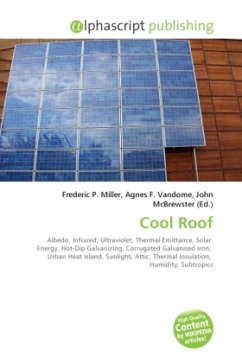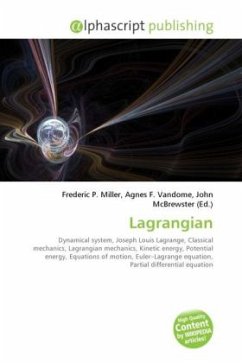
Cool Roof
Versandkostenfrei!
Versandfertig in 6-10 Tagen
36,99 €
inkl. MwSt.

PAYBACK Punkte
18 °P sammeln!
In the world of industrial and commercial buildings, a roofing system that can deliver high solar reflectance (the ability to reflect the visible, infrared and ultraviolet wavelengths of the sun, reducing heat transfer to the building) and high thermal emittance (the ability to radiate absorbed, or non-reflected solar energy) is a cool roof. Most cool roofs are white or other light colors. In tropical Australia, zinc-galvanized (silvery) sheeting (usually corrugated) do not reflect heat as well as the truly "cool" color of white, especially as metallic surfaces fail to emit infrared back to th...
In the world of industrial and commercial buildings, a roofing system that can deliver high solar reflectance (the ability to reflect the visible, infrared and ultraviolet wavelengths of the sun, reducing heat transfer to the building) and high thermal emittance (the ability to radiate absorbed, or non-reflected solar energy) is a cool roof. Most cool roofs are white or other light colors. In tropical Australia, zinc-galvanized (silvery) sheeting (usually corrugated) do not reflect heat as well as the truly "cool" color of white, especially as metallic surfaces fail to emit infrared back to the sky. European fashion trends are now using darker-colored aluminium roofing, to pursue consumer fashions. Cool roofs enhance roof durability and reduce both building cooling loads and the urban heat island effect. Also known as albedo, solar reflectance is expressed either as a decimal fraction or a percentage. A value of 0 indicates that the surface absorbs all solar radiation, and a value of 1 represents total reflectivity. Thermal emittance is also expressed either as a decimal fraction between 0 and 1, or a percentage.












